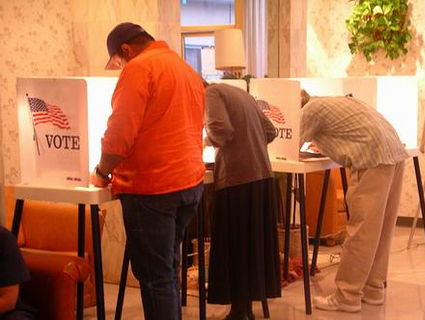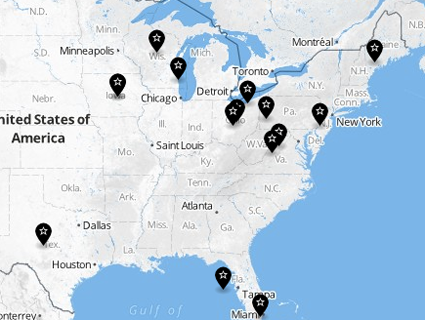
<a href="http://www.flickr.com/photos/theocean/1349370/">thomas</a>/Flickr
Hurricane Sandy left large swaths of Pennsylvania without power this week, and heading into Tuesday’s election as many as 300 polling stations were still in the dark on Friday afternoon. Many of those stations are reportedly in critical Bucks County. Once a Republican stronghold, the county went for Obama in 2008, and it has become increasingly Democratic. But in an indication of its key role in the election, GOP challenger Mitt Romney has decided to make a last-minute visit to Bucks County on Sunday, suggesting that he believes he can possibly win the rich trove of electoral college votes of a state long considered solidly blue. To win Pennsylvania, Romney has to win Bucks County.
News of Romney’s visit—and the $12 million worth of ads that the GOP has aired in the state in the past several days—comes at a time when many people in the county have remained without power, as many as 50,000 as of Friday afternoon. There’ve been varying reports about the number of polling stations that are affected and vague plans from elections officials as to how they’ll handle those outages come Tuesday. Republican Gov. Tom Corbett has made restoring power to voting precincts a high priority behind hospitals and other critical infrastrure. The state has extended absentee ballot deadlines in many places, including Bucks County, to give voters more time. And state officials have said they don’t expect any voting problems: Voting machines apparently can run on batteries for at least a few hours, and FEMA has reportedly offered to supply generators to run voting machines.
“We’ll absolutely have all the polling stations ready for Tuesday,” a spokeswoman from PECO, the power company, said on Friday. She said they expect all customers in the Bucks County area to have their power restored by Sunday at midnight.
Brittani Haywood, a spokeswoman for the Pennsylvania Democratic Party, said: “We expect that our Get Out The Vote efforts won’t be negatively affected by the ramifications of Hurricane Sandy, but we are closely monitoring areas affected by the storm.”
















